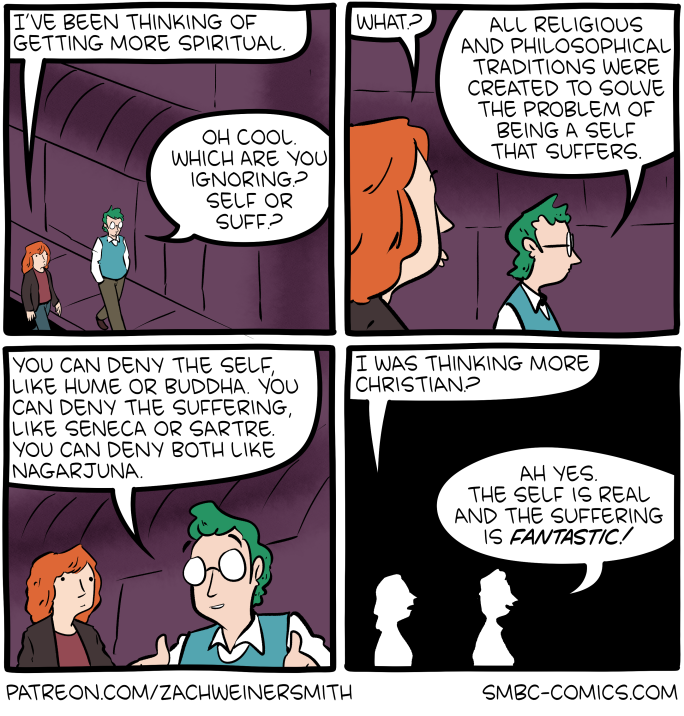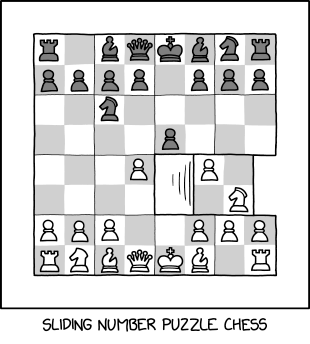
Click here to go see the bonus panel!
Hovertext:
Anyone complaining about my delineations should decide they are not in fact a self and so no email need be sent to correct me.
Today's News:
Welcome! This is a new Sunday edition of the Animation Obsessive newsletter. Our lineup today:
1) Why 2D movies are booming elsewhere.
2) Newsbits.
With that, let’s go!
1 – Stories that resonate
Folks who follow the animation news have already heard. Right now, hand-drawn features are taking over.
It’s happening in Japan, where Infinity Castle (of the Demon Slayer series) just became the third-biggest movie in the country’s history, climbing over Titanic. The thing’s earnings have passed $234 million worldwide, and they’re going up: the momentum has broken several records set by Mugen Train (2020), Japan’s top film.1
China is experiencing something similar. A feature called Nobody, produced by the venerable Shanghai Animation Film Studio, is doing numbers that even Chinese CG blockbusters rarely manage. Revenues are over $203 million (1.45 billion yuan) and rising. Meanwhile, The Legend of Hei 2 has brought in $68 million or so, just in China.2
For scale, consider two recent tentpoles from Hollywood, both CG. Elio stalled around $153 million worldwide. The Bad Guys 2 has done better — but, as of this writing, it’s under $180 million. And neither grossed significantly more in America than The Legend of Hei 2 did in China.
It isn’t a random blip. For several years, hand-drawn movies like The Boy and the Heron and Suzume have out-performed quite a few Hollywood CG releases: Wish, Strange World, Encanto, Lightyear. Japan’s Mugen Train beat every other movie in the world back in 2020.
That’s a lot of data — it’s kind of overwhelming. But the figures reveal a surprising trend. Hand-drawn films are big again, like they were in the ‘90s. And CG animation is no longer the silver bullet that Hollywood execs once believed it to be.
By now, the hand-drawn feature was supposed to be dead. It’s been 25 years or more since the talk started.
Back in 1995, Toy Story proved that CG features could be great — and massively successful. Just a few years later, Pixar’s president (that is, Steve Jobs) was boasting that hand-drawn animation was outmoded. “The characters we make are far more expressive, so we tell better stories,” he said.3
The workers who created Pixar’s movies didn’t necessarily feel that way. “My first love is really 2D animation, so I’d like to think it’s not dead. And I don’t think it is,” said Pete Docter in 2001. He argued that it has its own strengths, techniques that “will never work in CG.” The studio’s Doug Sweetland agreed: “people didn’t stop painting” with the invention of photography, he noted.4
They made good points. But Hollywood is a strange business. Certain decisions get made based on the buzzwords or slogans going around the corporate offices that day. If it sounds good, and it appears to help the bottom line, even a myth can become common sense.
Around the turn of the millennium, several of Hollywood’s 2D movies performed below expectations at the box office: Atlantis, Osmosis Jones, Treasure Planet, Sinbad, Spirit and some others. That same period saw a CG animation boom. Pixar was dominant with stuff like Finding Nemo; Shrek was enormous.5
There were exceptions to the trend. For example, Lilo & Stitch became a hit. Notably, it also got great reviews, unlike the foregoing hand-drawn features. Pixar’s people argued that the failures had a quality problem. “It’s just happened that the newer, better, fresher stories have been done in CG,” said Brad Bird.6
Decision-makers saw things differently. “People in Hollywood are so eager to hop on bandwagons, ready to condemn traditional animation to the scrap heap,” complained critic Leonard Maltin in 2003. By then, a belief had spread among the higher-ups that audiences were moving on. As one paper put it that year:
… the new Hollywood truism is that Bambi is dead, that kids hooked on the wizardry of 3D computer games no longer want to watch quaint old-fashioned characters against painted backdrops.7
Powerful people bought into this theory. In 2003, Jeffrey Katzenberg told the press that “the idea of a traditional story being told using traditional animation is likely a thing of the past.” In just a few years, Disney dismantled the bulk of its hand-drawn animation empire, including (in 2004) the notorious closure of the Florida branch that created Lilo & Stitch. Eisner took heat for it, but he did it anyway.8
One of Pixar’s top guys remembered that “Disney and other studios thought that audiences weren’t interested in watching hand-drawn animation anymore.”9
This left many workers furious, or depressed. Andrew Stanton (Nemo) said that Pixar’s victory, and the fall of 2D features in Hollywood, was “frustrating and bittersweet for us” — as people who loved the classics but saw problems in the new films. The whole CG animation goldrush appalled Brad Bird: the business was “in a dumb period,” he said in 2004.
It wasn’t a small thing to make this switch. Everyone who worked in CG animation knew it was really, really hard to create. Even in the ‘90s, John Lasseter flatly denied that computer animation saved time or money. One commentator explained that it was “very expensive,” but that companies jumped into it because “a lot of people ... would rather invest in technology than on personnel.” And Bird foresaw a fallout from this decision:
Those studio people who think that bad ideas will suddenly be made good by putting them through a computer are in for an unpleasant surprise … soon, there’ll be a glut of CG-animated movies, just as there were all these 2D cartoons after Disney made all that money from The Lion King. All of a sudden you had all these mediocre films rushed out at once. And 2D fell out of vogue. The same thing will happen with 3D.10
Bird spoke those words as The Incredibles was lighting up the box office. Pixar’s work was taking animation to places it’d never gone. The streak seemed unbreakable, and Hollywood’s execs only became more assured that they were right.
Yet, even then, many of the people who made CG animation wanted the traditional way to survive. “We didn’t see it as an either-or situation,” Stanton said. Bird argued that the death certificate had been signed far too early. Studios believed that people went to see CG features because of the technology — he disagreed.
“[I]t’s about stories and characters ... Artists make the film,” Bird said, “and they either make good decisions or bad decisions, and there’s nothing magical about the equipment. It’s just a tool.”
For Nobody, story and characters have been key.
The success began in 2023, when Shanghai Animation Film Studio swept China with a short film (currently on YouTube in English). It’s about a nameless monster, a young boar-creature, who serves as a low-ranking minion. He’s overworked and irrelevant; the real story of heroes and villains takes place off-screen. His bosses are planning to ambush Sun Wukong and his companions, and he’s lucky to clean the cooking pot.
Director Yu Shui wanted to “put the perspective on the little monsters who used to have blurry faces and don’t even have names” in Journey to the West, he said. It’s a short about average people in China. The lead character “cannot see the big heroes, which is the same situation in real life.”11 And a lot of viewers were moved. It isn’t epic in scale or flashy in style, but it turned into a sensation.
The same philosophy is inside the Nobody feature, which Yu and Shanghai Animation built out of the short. He calls its approach “mythological realism.” The movie uses fantasy to tell stories with everyday resonance, in which people recognize themselves and each other.
Nobody isn’t about spectacle — which is unusual for current Chinese animation, where spectacle matters. The film looks a little out of its league compared to CG movies like Deep Sea or Jiang Ziya. But, in a country that doesn’t produce 2D megahits, this film became one. It’s made more than Deep Sea, and forecasts have it beating Jiang Ziya. Already, it’s one of China’s 10 biggest animated features.12
Again: that wasn’t supposed to happen. Per the myth, technology had advanced and hand-drawn movies were going away. Yet Nobody is out-grossing some of Hollywood’s major animation this year, on a budget under $10 million (some reports place it as low as $4.19 million).13
The film is part of the increasingly big tent that is hand-drawn feature animation. There’s space for huge budgets (The Boy and the Heron) and for tiny ones. Look-wise, Nobody fits beside cult gems from the past eight years like The Summit of the Gods, Dahufa, Flee and The Breadwinner. Only it’s making a new kind of money. Now, even off-beat, low-budget movies like these have a shot.

There’s no doubt that Sinbad, Home on the Range and other projects did poorly in theaters during the ‘00s — or that CG films (even some that critics panned) did well. The numbers tell the tale.
Still, the reaction from businesspeople back then looks shortsighted today. Hollywood used to own the market for hand-drawn features, and yet Disney hasn’t made one since Winnie the Pooh (2011). Studios abroad filled that empty space with their own work. And something as inconspicuous as Nobody is, today, earning profits that Hollywood animation often doesn’t.
Even now, new bandwagons are passing through corporate offices. For a few years, it’s been said that original movies are dead. That might change after the transformation of KPop Demon Hunters into one of Netflix’s biggest successes — but it also might not.
All of it has consequences for art and artists. A lot was lost when Hollywood got rid of its infrastructure for hand-drawn movies: talent scattered, 2D training slumped.
Top people believed that this stuff was a waste, and that CG animation was automatic money. The idea was too convenient, as Brad Bird said. Pixar’s success had been driven by the strength of the movies themselves — something that was open, too, to hand-drawn animation. In 2004, he made a prediction:
[If they] assume that all you need is a computer and someone to control it to get a smash hit, the inevitable headline down the pike will be “Audience loses interest in CG films.” Well, no, they won’t be, any more than they are particularly interested in them now.
2 – Newsbits
Speaking of Nobody, an artbook was released alongside the film in China, and sales are around 20,000 copies already. (Also, the film’s theatrical run has been extended to October 1.)
More details are emerging about Latvia’s Limbo, the next from Gints Zilbalodis (Flow). Its producer says that the National Film Center supplied the “base funding” of roughly €2 million — “the highest grant they’ve ever handed out.”
In China, Enlight Media reports that it earned far more in the first quarter of 2025 than it did across the whole of 2024. The reason? It produced Nezha 2.
John Kelly of Ireland spoke to Animation Magazine about his film Retirement Plan. “Writing a film script is more affordable than therapy,” he said.
In America, the de minimis duty exemption for imports under $800 has ended, and mail carriers (including DHL) are pausing many shipments to the States.
Kazakhstan saw the release of an animated feature, Golden Man, back in June. The film just picked up an award from a festival in Jordan. See the trailer here.
In Japan, On-Gaku: Our Sound is returning to theaters with some 200 shots redrawn.
The Spanish outlet El País explored the success of KPop Demon Hunters and the reasons behind it.
Cartoon Brew dove into Charamuscas, a new animated series from Mexico. Uniquely, one of the country’s own broadcasters commissioned it. The project leads call it “very significant that a Mexican television channel has opted for an animated production like this.”
Last of all: we dug into the making and context of The Brotherhood of Man (1946), a short that helped to define UPA and the mid-century cartoon era.
Until next time!
See Walkerplus and Box Office Mojo.
See the Telegraph-Journal (November 17, 1998).
Quotes from the Philadelphia Daily News (November 2, 2001).
See The Ottawa Citizen (September 13, 2003) and The Toronto Star (July 11, 2003), both used several times today.
See The Boston Globe (November 7, 2004), one of our main sources for Bird’s quotes today.
The Maltin quote comes from USA Today (October 29, 2003), while the blockquote is the foregoing Ottawa Citizen article.
See Backstage for details on this closure. Roy E. Disney called it “yet another example of Michael Eisner’s de-emphasis of creativity and total indifference to the impact his decisions have on the people who helped to make the company great.” For a behind-the-scenes look at this era, see MousePlanet.
From The Telegraph.
See The Orlando Sentinel (November 14, 2004), an important source.
Quotes from ChinaDaily. The point about “mythological realism” was made to Poison Eye.
It's really nice! Hope I'll get to see the feature film reinterpretation one day. Also really cool that it's by the Uproar in Heaven studio :)
Featuring Richard Elwes. Learn more about Jane Street internships at https://jane-st.co/internship-numberphile-25 -- More links & stuff in full description below ↓↓↓
Extra footage: https://youtu.be/y1vBPDz96g0
Large numbers playlist: https://www.youtube.com/playlist?list=PLt5AfwLFPxWJ_FwchNAjB3xa8UnoKdmQI
Richard Elwes at the University of Leeds: https://eps.leeds.ac.uk/maths/staff/4018/dr-richard-elwes-
Or: https://richardelwes.co.uk
His books: https://amzn.to/4fJIhHE
Richard on Numberphile: https://youtube.com/playlist?list=PLt5AfwLFPxWI42WXh1jnv51jHrcjatrk8&si=gHHt4EVBv3zWQKMW
Patreon: http://www.patreon.com/numberphile
Numberphile is supported by Jane Street. Learn more about them (and exciting career opportunities) at: https://bit.ly/numberphile-janestreet
We are also grateful for support from Ben Delo.
NUMBERPHILE
Website: http://www.numberphile.com/
Video by Brady Haran and Pete McPartlan
Numberphile T-Shirts and Merch: https://teespring.com/stores/numberphile
Brady's videos subreddit: http://www.reddit.com/r/BradyHaran/
Brady's latest videos across all channels: http://www.bradyharanblog.com/
Sign up for (occasional) emails: http://eepurl.com/YdjL9















